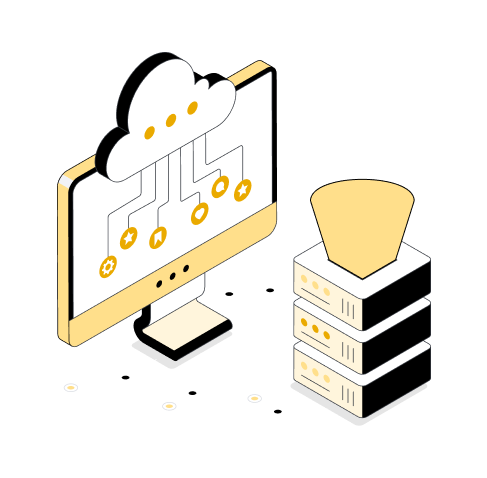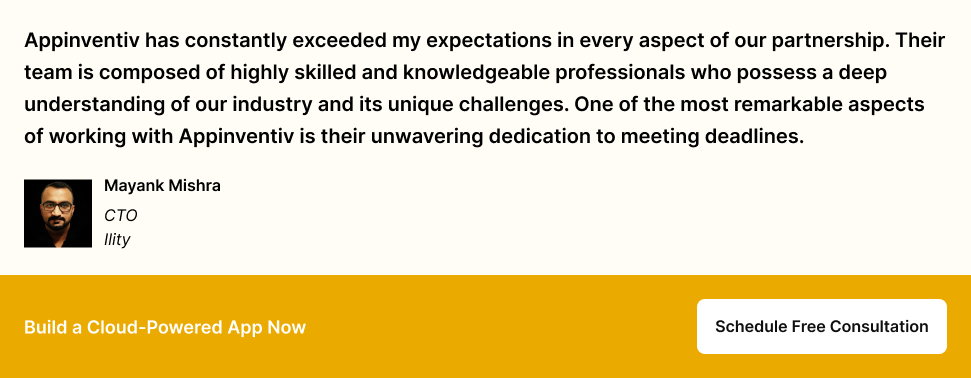- Types of Cloud-Based Solutions Available for Enterprises
- Software as a Service (SaaS)
- Platform as a Service (PaaS)
- Infrastructure as a Service (IaaS)
- Undeniable Benefits of Using Cloud-Based Applications
- Cost-saving
- Security
- Unmatched Flexibility & Agility
- Competitive Edge and Sustainability
- Mobility
- Data Insight
- Speed of Development
- Automatic Updates
- Data Quality
- A Varied Range of Solutions
- How to Develop a Cloud-Based Application: A Step-by-Step Guide
- Choose the Right Cloud Platform
- Hire a Cloud Development Team
- Define the App’s Architecture and Features
- Choosing the Tech Stack
- Develop the Application
- Finalize an App Monetization Model
- Test and Launch the App
- App Approval
- Ongoing Maintenance
- Best Practices for Cloud Application Development
- Real World Examples of Cloud Application Development
- Overcoming Technical Challenges in Cloud-Based App Development
- Service Design
- Application Security
- Interoperability and Portability
- How Much Does It Cost to Build a Cloud-Based Application?
- Emerging Trends in Cloud Application Development
- How Appinventiv Can Help You with Cloud App Development
- FAQs
Key takeaways:
- The cloud computing market is expanding rapidly, projected to hit $2.39 trillion by 2030,
making cloud app development a strategic imperative for businesses. - Modern cloud application development offers advanced advantages like multi-experience support,
AI/ML integration, and robust security, pushing innovation boundaries. - Understanding deployment models (private, public, hybrid, community) and service models
(SaaS, PaaS, IaaS) is crucial for tailored cloud-based application development. - Building a successful cloud application is a challenging task. It requires partnering with
a reputable cloud computing service provider.
Cloud computing is a rage in the present business landscape. As business mobile applications continue to expand, storage capacity and performance have become significant challenges for many organizations.
According to Adobe’s 2023 report, 42% of employees are cleaning up their digital storage due to running out of space, and 35% face performance issues. Furthermore, Wasabi’s 2025 Global Cloud Storage Index found that 62% of organizations exceeded their cloud storage budgets last year, highlighting the complexity of managing storage needs in the digital workspace.
The solution to these challenges lies in cloud computing. Cloud-based application development streamlines data collection, enhances security, and simplifies management processes. By adopting cloud app development, modern businesses can build productivity-driven applications that improve both customer experiences and revenue streams.
Furthermore, cloud app development enables enterprises to leverage low-code, no-code app development, which is again a time- and cost-effective process. This “multi-experience” isn’t just a fancy term; it’s the future of app development, particularly when seamlessly integrated with cutting-edge technologies like IoT (Internet of Things), AI/ML (Artificial Intelligence/Machine Learning), and blockchain. The cloud solutions offer a seamless and conversational experience for users, especially when integrated with mobile apps.
These compelling advantages explain the soaring popularity of cloud applications. The global cloud computing market, encompassing all forms of cloud services and application development, tells a striking story of growth.
Once valued at $133.6 billion in 2020 and projected to reach $168.6 billion by 2025 (as of Statista’s older reports), the market has far outstripped those early predictions. Today, the global cloud computing market is forecast to surge from $752.44 billion in 2024 to an astonishing $2.39 trillion by 2030, exhibiting a robust CAGR of 20.4% from 2025 to 2030. This exponential growth cements the cloud’s position as an undeniable force in the digital realm.
Such immense growth naturally sparks questions for businesses: How do we embark on developing cloud applications the right way? Let’s find those answers today! In this article, we’ll demystify the various cloud-based application development solutions available, explore their profound benefits, and guide you through the process of how you can create a cloud application that truly succeeds.
With 42% of employees facing performance issues due to storage constraints, it’s time to build or optimize your cloud app for better efficiency.
Types of Cloud-Based Solutions Available for Enterprises
Cloud computing platforms aren’t a monolithic entity; they encompass a vast ecosystem of resources such as databases, data servers, storage, etc., all managed by third-party providers. The third-party authorizes the computer reserves and its infrastructure on a free or paid basis. In short, you can leverage the services, resources, and space without worrying about infrastructure maintenance. Here are four common types of cloud deployment available for businesses:

1. Private cloud – This functions as a private web system with a secure space for applications, web and data. A private cloud service is utilized by one company, ensuring complete isolation and control.
2. Public cloud – Data in the public cloud resource is only accessible through an authorized device, but accessible by multiple users. Public clouds usually offer optimal price and flexibility for data processing.
3. Hybrid cloud – The hybrid model for cloud app development encompasses both public and private cloud environments. Here you can distribute the data among on-device services and third-party apps, along with additional variants for deployment and optimization.
4. Community cloud – Community cloud deployment is similar to private cloud. This model facilitates data sharing and collaboration among two or more organizations with shared interests or regulatory requirements.
[Also Read: Cloud Data Migration – Adopting the Right Strategy and Best Practices]
Beyond these deployment models, there are various cloud application development solutions available for enterprises. Three major cloud-based app development solutions are:

Software as a Service (SaaS)
SaaS stands for creating cloud applications that are ready-to-use via web browsers and mobile apps. SaaS lets customers access the applications online without actually having to configure or install them on the device.
SaaS cloud application development can be used for:
- Managing CRM (Customer Relationship Management) systems and databases of clients
- Automating services and products sign-up
- Providing auditing features and email tools etc.
- Sharing agendas and calendars across the entire organization to plan future events
- Managing documents for file sharing and collaboration.
Prominent tech giants leveraging SaaS cloud app development include AWS, Salesforce, Google Workspace (formerly Google Apps), and Zendesk.
[Also Read: Copy of How much does it cost to build a SaaS application on AWS]
Platform as a Service (PaaS)
PaaS allows you to rent every resource and service you need to develop an application, relying on cloud providers for infrastructure, operating systems, and development tools. This means you will be taking an entire cloud application platform (software and hardware) as a service for developing cloud applications.
PaaS cloud applications development can be used for
- Operating systems
- Database running infrastructure
- DEvelopment tools
- Middleware
Some of the common PaaS cloud platforms are OpenShift, Windows Azure, and Heroku.
Infrastructure as a Service (IaaS)
In IaaS cloud services, your cloud provider manages your entire business infrastructure, including network, server, storage and visualization. This infrastructure can be managed by a private or public cloud. Moreover, along with controlling the resources, IaaS cloud services offer tons of additional services for cloud based app development like:
- Detailed invoice and cost tracking
- Resiliency tools for robust backup, recovery, and replication.
- Log access for monitoring and troubleshooting.
- Security instruments ( PCI-DSS compliance, data encryption protocols)
- Load balancing and clustering for optimal performance and availability.
Prominent IaaS cloud platforms widely utilized today include Amazon Web Services (AWS), Microsoft Azure, and Google Cloud Platform (GCP).”
If you are still hesitant about committing to cloud solutions, our next section will familiarize you with cloud app development benefits. Let’s see how developing cloud applications can benefit your business app model in the long run.
Undeniable Benefits of Using Cloud-Based Applications
Cloud application development is profitable for every enterprise and business, as most data storage and processing issues are handled by remote servers. Beyond this foundational advantage, cloud app development has a range of undeniable advantages that are mentioned briefly here.
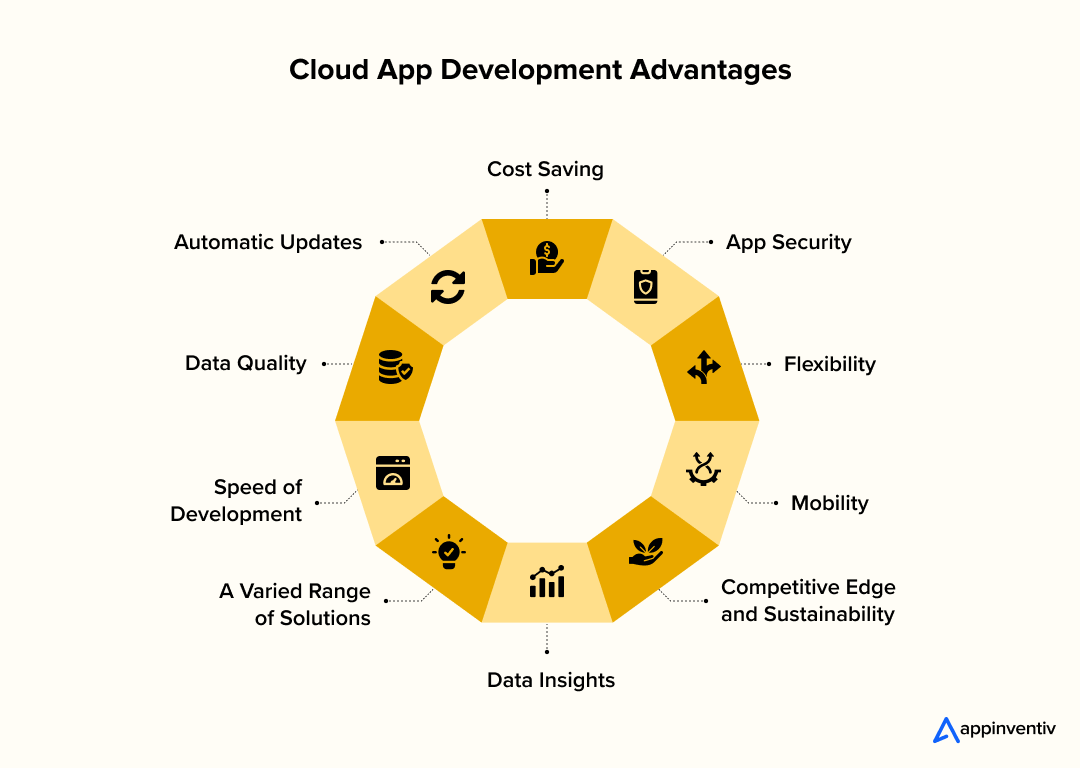
Cost-saving
One of the most immediate advantages of cloud applications is financial efficiency. Cloud services only charge for the necessary cloud space and feature sets required for your application development model. This pay-as-you-go system applies to every cloud deployment service that factors in lower cost and higher results.
Security
A cloud host’s full-time job is to monitor data security which is significantly more efficient than a conventional in house system. Cloud app development also makes it easier to comply with government security standards. On top of that, the cloud gives an automated response to updates and data recoveries.
Unmatched Flexibility & Agility
Cloud-based application development offers overall more flexibility when compared to hosting on a local server. If you need extra bandwidth, cloud services can meet that demand instantly rather than going on a long update to enhance infrastructure.
Competitive Edge and Sustainability
Cloud services integrated with AI technology such as chatbots and assistants also offer a better customer experience to the audience. For instance, Appinventiv developed an AI-based analytics platform on the cloud for a leading global bank to enhance its CRM system and customer retention.
With the help of the developed conversational AI on the cloud, the bank was able to handle 50% of customer requests, resulting in reduced manpower cost by 20%. This kind of efficiency provides a huge competitive advantage and aligns with long-term sustainability goals.
Mobility
Through cloud application platforms, you can access information across any device, gadget, team, company etc., to remain updated. It’s not surprising at all to see that organizations investing in cloud sharing services have better employee engagement and satisfaction than the local hosting companies.
Cloud-native application development also helps with personalized customer data insights to boost data access speed and experience. For instance, Appinventiv crafted a customer-centric data analytic platform on the cloud for a leading telecom company. The insights offered by the cloud analytic platform led to 85% in data accessibility, better customer data management and optimization.
Data Insight
Cloud-native application development also enables personalized customer data insights, enhancing data access speed and overall experience. For instance, Appinventiv crafted a customer-centric data analytics platform on the cloud for a leading telecom company. The insights offered by the cloud analytics platform led to 85% in data accessibility, better customer data management, and optimization.
Speed of Development
The tools and services provided by cloud computing service providers enable faster development cycles. Pre-built templates, frameworks, and cloud-native development kits help developers build and deploy apps much quicker than traditional methods.
Automatic Updates
With cloud-based systems, updates are pushed automatically. This quick updates ensure your applications are always running the latest versions without downtime or user intervention.
Data Quality
Beyond these tangible benefits, cloud computing for businesses plays a critical role in maintaining data quality. The cloud-based applications offer robust disaster recovery mechanisms and mitigate data loss.
A Varied Range of Solutions
Eventually, cloud-based solutions contribute the most to the organization’s success by extending the range of services and resources for the business model. From CRM to ERP solution development, the cloud computing platform manages everything.
For instance, Appinventiv created an ERP solution on the cloud for the world’s biggest furniture retailer, IKEA. From creating a private IP address to developing an entire web application on the cloud, we helped IKEA improve its customer onboarding and data accessibility.

Also Read: Why cloud managed services are a strategic necessity for modern enterprises
How to Develop a Cloud-Based Application: A Step-by-Step Guide
Cloud application development encompasses a wide spectrum, from mobile development services to web development services. The key is choosing the most appropriate approach, ensuring aspects like interconnection bandwidth go well with your project idea.
It’s also important to have an investing mindset when working with cloud development. You need to understand that the resources you invest today will pay off and scale your business in the long run.
Before you begin, identify your target audience, pain points, and demand in the required app. Then analyze how your product can resolve these challenges. When you are done analyzing, below are the steps you can follow to create a cloud-based application the right way:
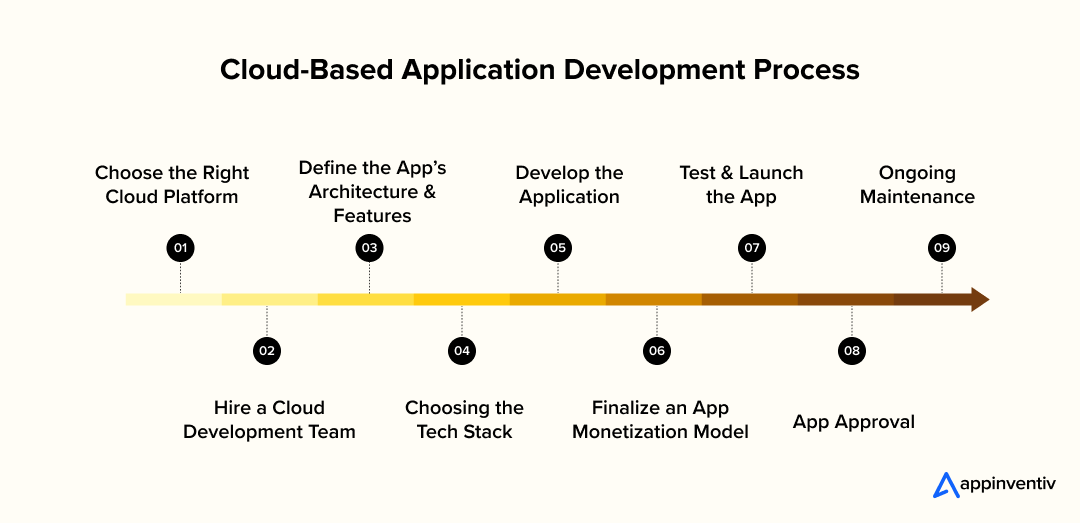
Choose the Right Cloud Platform
Decide which cloud platform is best suited for your needs. The three major cloud providers—Amazon Web Services (AWS), Google Cloud Platform (GCP), and Microsoft Azure—offer robust services, each with unique features and benefits. To make a right choice, you should consider factors like your company’s existing tech stack, budget, and scalability needs.
Hire a Cloud Development Team
You are more likely to build a successful app when you outsource cloud development services. A reliable cloud app development company will get you quick business model analysis, app development cost estimation, and a project planning report.
Before diving into the actual development process, your cloud application developers will help you create an app workflow, choose the MVP features of the app, and design the app concept.
Define the App’s Architecture and Features
For efficient cloud-based app development, consider key aspects such as service model, app architecture, and cloud migration. These decisions directly affect your app’s performance. Hence, it’s important to discuss with your outsourced team what’s best.
Experienced cloud app developers recommend using advanced cloud architecture built on microservices. You can choose any kind of cloud deployment service discussed above (IaaS, SaaS, PaaS) for the service model.
Further, you can move your company’s data to the cloud server for better accessibility and processing using cloud migration.
Choosing the Tech Stack
When choosing tools for creating cloud applications, you must analyze requirements, features, and design that fit your app. Also, keep in mind the scalability factor while choosing the tech stack. Below is a common tech stack for creating simple and advanced cloud-based applications.
| Category | Tools |
|---|---|
| For Data and App | ClearDB, Cloudant, Akamai |
| For DevOps | DataDog, Jenkins, New Relic, Sauce Labs, Bitbucket, Cloud9 IDE |
| For Business Tools | G Suite, Jira, DocuSign, UXPin, Balsamiq, InVision |
Develop the Application
Now, it is time to bring your vision to life. Utilize cloud-native application development principles, such as containerization, to build the app. With tools like Docker and Kubernetes, you can ensure your app is portable and scalable.
Finalize an App Monetization Model
Now that you know what your audience needs, you can predict what your users will pay for. Here are four app monetization models you can choose from:
- Paid: Users pay a one-time fee to download or access the app.
- In-app purchase: The app is free to download, but users pay for additional features, content, or virtual goods within the application.
- Freemium: A basic version of the app is free, with premium features or an ad-free experience available for a subscription or one-time payment.
- Advertising: The app is free, and revenue is generated through displaying advertisements to users.
Test and Launch the App
After development, it’s time for testing. Testing the product using various quality assurance processes is mandatory before releasing it. This confirms if your cloud application provides the desired user experience. Once tested, you can deploy it using cloud orchestration tools like Kubernetes to automate the scaling and management of the app.
Remember, outsourced full-cycle development companies offer design, development, testing, and management services that result in higher product quality.
App Approval
Once developed and thoroughly tested, it’s time to get app approval on major platforms like Google Play (for Android) or Apple App Store (for iOS).
- Google Play: Google Play works on automated testing to speed up the app approval process. However, Google doesn’t mention why your app is rejected in the result. Google Play also does not charge for its analogous fee.
- App Store: The App Store delegates app validation to real people. If the validators unapprove your app, they will ask you to perform specific changes for approval. Also, remember that app deployment may take some time and require additional development and modification costs.
[Also Read: How to Upload an App to Google Play Store?]
Ongoing Maintenance
Post-deployment, your cloud application will need regular monitoring, updates, and scaling. Cloud development services can assist with continuous integration/continuous deployment (CI/CD) to keep the app running smoothly.
Best Practices for Cloud Application Development
- Leverage Cloud-Native Tools: Embrace cloud-native tools and services to ensure your app is optimized for cloud environments. Platforms like AWS Lambda and Google Cloud Functions allow you to build serverless applications, improving scalability and reducing costs.
- Focus on Security: Security should be top of mind in cloud computing application development. Implement strong encryption, ensure secure APIs, and use identity and access management (IAM) systems to protect sensitive data.
- Optimize for Performance: Use Content Delivery Networks (CDNs) to deliver content quickly and ensure your app is optimized for low latency. Tools like AWS CloudWatch and Google Cloud Monitoring can help with real-time performance monitoring.
- Adopt DevOps Practices: DevOps culture is crucial in cloud application development. Continuous integration and continuous delivery (CI/CD) practices can ensure smoother development, testing, and deployment cycles.
- Prepare for Multi-Cloud: Consider adopting a multi-cloud strategy for added flexibility and redundancy. This ensures your application is not locked into one cloud provider, reducing dependency risks.
Real World Examples of Cloud Application Development
Cloud applications are transforming industries across the globe by offering scalability, flexibility, and seamless integration. From tech giants to startups, companies are harnessing cloud platforms to build innovative solutions that drive efficiency and improve user experiences. With that said, here are the top 3 real-world examples of how business giants are utilizing cloud application development to solve business challenges and accelerate growth.
- Netflix: Uses cloud-based application development to scale its video streaming services globally. By utilizing AWS, Netflix can efficiently handle millions of concurrent users and deliver a seamless experience.
- Dropbox: A prime example of cloud-native application development, Dropbox leverages cloud storage for its file-sharing platform, allowing users to access files from any device at any time.
- Airbnb: Airbnb uses cloud services to manage millions of listings and bookings, ensuring the platform remains scalable, secure, and responsive as user demand fluctuates.
Overcoming Technical Challenges in Cloud-Based App Development
Cloud-based product development is definitely technically demanding and challenging. Along with the desired benefits, you must also be aware of common pitfalls that come during the cloud development process and solutions to overcome them. Below are some of the most frequently faced challenges and their solutions:
Service Design
Challenge: It is important for cloud apps to be tightly coupled with service logic and implementations in a customer-centric world. While simple in principle and infrastructure, it can be a rough time for cloud app developers to design flexible and reusable components that adhere to service features.
Solution: To overcome this, focus on designing with a microservices architecture and an API-first approach. This fosters the creation of small, independent components that are highly reusable and adaptable to changing customer needs.
Application Security
Challenge: Application security beyond authorization has always been an area of concern for users. Due to the state of browsers, your cloud app needs to ensure a critical security factor outside the browser.
Solution: You can reinforce your cloud app’s defenses by implementing a Zero Trust security model and robust Identity and Access Management (IAM). Also, you can use a reverse proxy and strong data encryption measures to address possible security concerns.
Interoperability and Portability
Challenge: When working with the cloud framework, interoperability is the ability to write code that is well-versed with multiple cloud providers simultaneously, despite the platform differences. However, the pressing issue is the communication of various platforms through one code structure. For this, the cloud app developers require strict and standardized operating protocols that are easy to implement.
Solution: Achieve true interoperability and portability through containerization technologies like Docker and Kubernetes, ensuring consistent application deployment across diverse cloud environments.
How Much Does It Cost to Build a Cloud-Based Application?
There is no one-size-fits-all formula to answer how much it costs to build a cloud application. On average, the cloud app development cost ranges between $30,000 $300,000 or more, depending on several key factors.
Here’s a crisp table summarizing the cost and timeline ranges for various types of cloud applications:
| Type of Cloud Apps | Estimated Cost | Estimated Timeline |
|---|---|---|
| Basic Cloud App | $30,000 – $60,000 | 3 – 6 months |
| Intermediate Cloud App | $60,000 – $150,000 | 6 – 9 months |
| Complex Cloud App | $150,000 – $300,000+ | 6 – 12 months+ |
It’s important to note that the ranges above generally do not include cloud hosting prices. You can choose any hosting platform from AWS to Microsoft Azure or GCP cloud hosting.
The cost of developing a cloud application relies on the following factors:
- Product Design Complexity: The intricacy of the UI/UX and overall design.
- Product Features: The number and complexity of functionalities.
- Project Size and Complexity: Larger, more intricate projects naturally require more resources.
- Technology Stack: The chosen programming languages, frameworks, and tools used.
- Timeframe: Accelerated development schedules can sometimes incur higher costs.
Your cloud development service provider can give an accurate cloud app development cost estimate, keeping every factor in mind.
The best part about cloud app development services is that you don’t have to deal with any sort of server expenses, hardware complexities and data storage issues. However, it is not an easy job to manage cloud-based solution development since a few challenges are always on the way.
[Also Read: How Much Does it Cost to Build a Cloud Based Digital Signage Software? ]
Emerging Trends in Cloud Application Development
As cloud technologies evolve, new trends are shaping the future of application development. Here is a quick overview of some of the top trends redefining the landscape of cloud app development
- AI and Machine Learning Integration: The integration of AI and machine learning into cloud applications is on the rise. This integration helps improve user experiences, automate processes, and offer more personalized services.
- Edge Computing: As the integration of IoT devices and cloud computing advances, edge computing is becoming increasingly crucial for reducing latency. By processing data closer to where it is generated, cloud apps can perform faster and more efficiently.
- Serverless Computing: Businesses are increasingly choosing serverless architecture due to its various benefits. It allows developers to build scalable applications without managing the underlying servers.
- Hybrid Cloud Solutions: More enterprises are adopting hybrid cloud solutions. This isn’t about choosing one or the other; it’s about strategically blending both private and public cloud infrastructures. Why do this? Because it offers a powerful balance of security, compliance, and scalability.
How Appinventiv Can Help You with Cloud App Development
Appinventiv is a leading mobile app development company with expertise in technologies such as cloud computing, AI/ML, AR/VR, data analytics, and so on. We leverage our deep industry knowledge to deliver innovative cloud solutions that help businesses scale and grow. Our team of 1600+ tech experts can guide you in selecting the right cloud model (IaaS, PaaS, SaaS) that best suits your business needs.
Here’s why businesses choose Appinventiv for cloud app development:
- End-to-End Services: We offer cloud consulting, cloud machine learning, cloud-native development, flexible cloud management, and cloud computing services that yield impressive outcomes.
- Industry Recognition: Our unmatched excellence has been recognized with accolades such as the Times Business Awards 2023, Deloitte Technology Fast 50 India 2023–2024, Clutch Global Spring Award 2024, and more.
- Proven Success: Our portfolio of 3000+ successful platforms is a testament to our unmatched expertise in app development.
- Trusted by Leading Brands: In our 10+ years of industry experience, we have worked with high-profile clients like YKA, IKEA, Ility, and AVATUS to deliver transformative cloud-based solutions.
Connect with us today for the most scalable, secure, and future-ready cloud mobile app solutions.
FAQs
Q. What is a cloud-based application?
A. A cloud-based app is an internet-run program with components that store and run online, with some or all processes executed on the cloud. Unlike traditional applications, which are hosted on local servers or physical infrastructure, cloud apps are built to leverage the scalability, security, and flexibility of cloud computing services.
Q. What is the difference between a web application and a cloud application?
A. The major difference between web and cloud applications is the architecture. A web-based app must have a continuous internet connection to function. On the other hand, a cloud-based application can temporarily perform processing tasks on a local computer or workstation.
Q. How much does it cost to build a cloud-based app?
A. The cost of cloud-powered app development ranges between $30,000 and $300,000 or more, depending on your unique project requirements.
Discuss your project idea with us to get a more precise estimate for cloud application development.
Q. What are the key characteristics of cloud-based applications?
A. Here are the performance-defining characteristics of cloud app development.
- In cloud application development, the app’s data is stored in the cloud infrastructure and could be partly cached on a user’s device. This means there are minimum requirements for devices to run the application.
- The cloud infrastructure can temporarily store information on a user’s device to allow the user to access it while offline. Once the user is online again, the cloud app is updated and uploads the generated data from offline to the cloud storage location.
- You can set up backup schedules as well as data optimization, compression, and encryption as a user in any way you want.
- A cloud application can be accessed with the help of any internet-connected device, including a desktop, tablet, or mobile. This helps the user to get independent of browser capacities.
- Cloud-based applications also offer access to third-party cloud computing services with API integration, and they are more easily customized than web applications.
Q. What is the most common example of a cloud application?
A. Google Docs or Office 365 is a paradigmatic example of a cloud application. In order to access any of these cloud applications, all you need is a device capable of running a web browser or an internet connection. The functionality and interface, along with the data storage, are delivered from the remote servers.
Q. Why is cloud computing the future of modern technology?
A. The technological future demands agility, efficiency, and resilience. Cloud computing is precisely such a technology. It dramatically reduces your business’s expenses on physical servers, hardware management, and data storage.
By moving these resources to the cloud at minimal cost, you save valuable time and money while simultaneously enhancing your operational efficiency and capacity for innovation. It’s the engine driving digital transformation.
Q. What are some of the latest cloud computing trends?
A. Some of the recent cloud computing trends making a hit in the market are:
- Cloud AI
- Quantum Computing
- Kubernetes
- Containerization
- Intelligent SaaS
- Cloud Native applications
Q. What are the benefits of cloud-native application development?
A. Some of the most obvious advantages of cloud computing app development are:
- Cost Saving
- App Security
- Flexibility
- Competitive Edge and Sustainability
- Mobility
- Data Insights
- Speed of Development
- Automatic Updates
- Data Quality
- A Varied Range of Solutions
Please refer to the above blog to gain an in-depth understanding of these benefits.


- In just 2 mins you will get a response
- Your idea is 100% protected by our Non Disclosure Agreement.
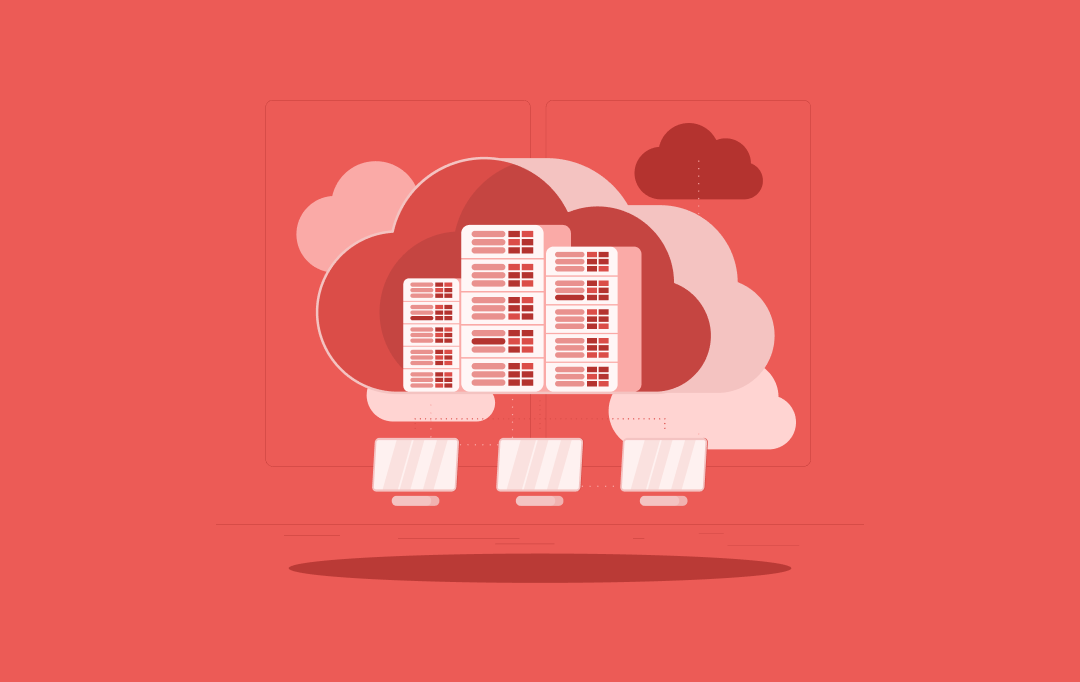
How to Build a Robust Multi-Cloud Strategy for Future Readiness
Key takeaways: Multi-cloud adoption is growing and 76% of enterprises have already embraced multi-cloud environments. Avoiding vendor lock-in is a major driver for businesses moving to multi-cloud strategies. Cost optimization and enhanced security are key benefits of multi-cloud adoption. Businesses must align their multi-cloud strategy with business objectives for scalability, security, and innovation. Seamless integration…
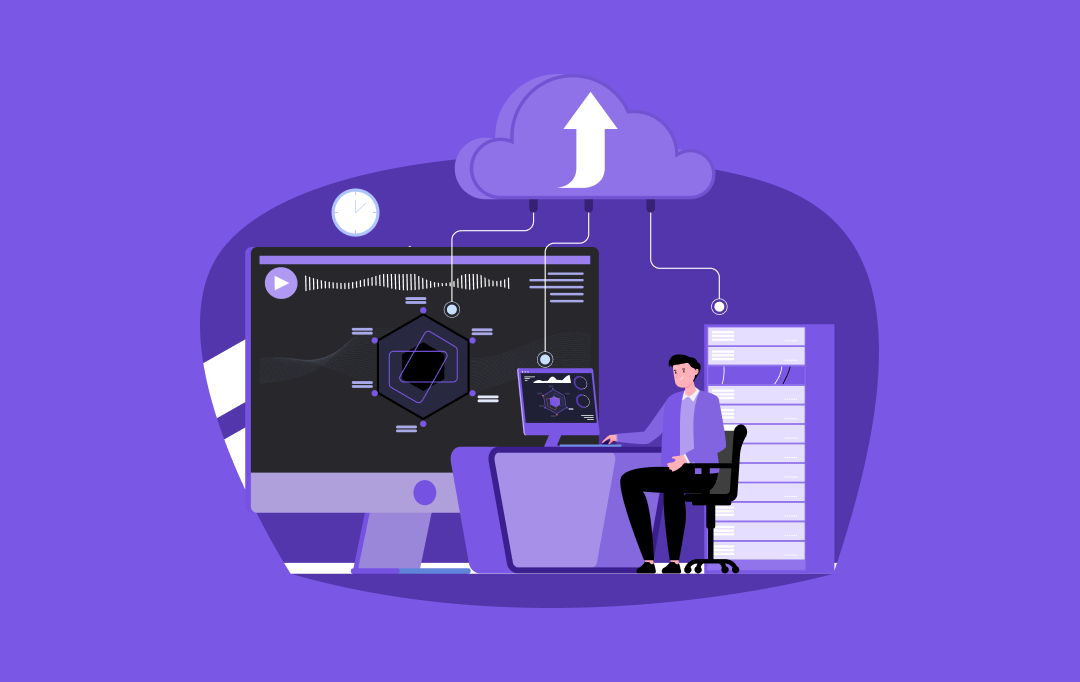
How Cloud Analytics Helps Businesses Make Data-Driven Decisions Faster
Key takeaways: Cloud analytics accelerates decision-making by offering real-time insights and scalability. Businesses gain cost efficiency, enhanced agility, and improved accuracy with cloud analytics. Leveraging AI and big data empowers faster, smarter decision-making in industries like e-commerce, healthcare, and finance. While implementing cloud analytics, businesses face challenges like data security and integration, but there are…

Transforming Legacy Systems with Cloud Migration: The Whys and Hows
Key takeaways: Legacy systems hinder innovation, security, and agility, making cloud migration a strategic imperative. A successful legacy to cloud migration hinges on careful planning, choosing the right strategy, and robust execution. Benefits of cloud migration for legacy systems include enhanced scalability, fortified security, and significant cost optimization. Industry-wide use cases demonstrate the transformative power…







